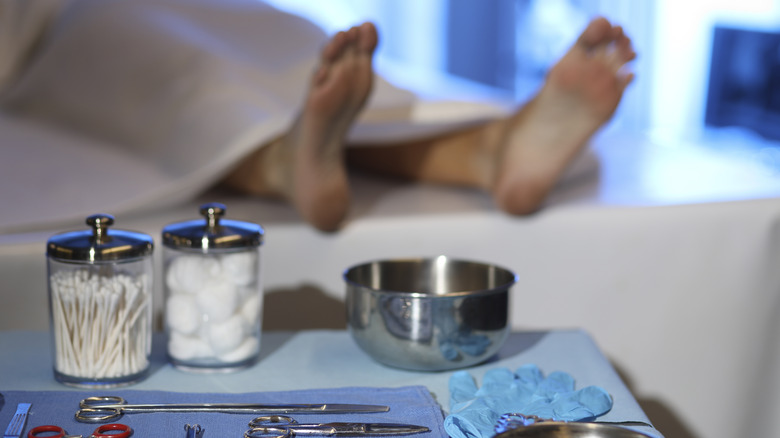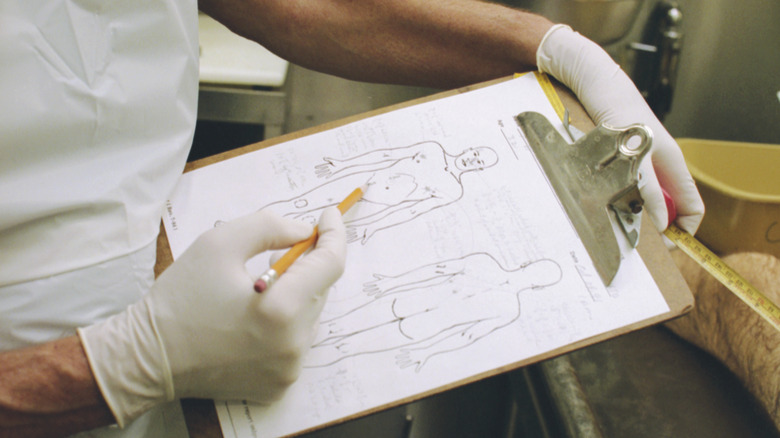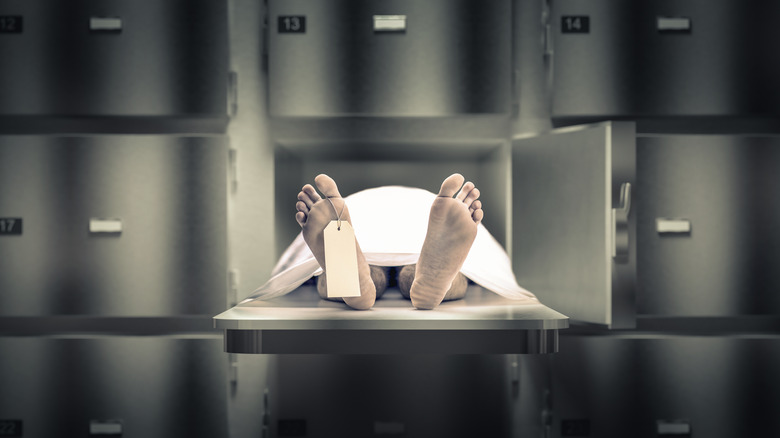What Were The First Autopsies In History Like?
Usually carried out if someone has died in suspicious circumstances or from an unknown cause, an autopsy helps medical practitioners or coroners find out information about why a person died. Not a new invention by any means, the procedures have been part of the medical and history fields for a long time. According to Popular Mechanics, during 367 to 282 BCE, Egyptian King Ptolemy I Soter granted those in the medical field permission to dissect bodies to gain a better understanding of the human body. Many of the first autopsies were conducted on criminals who had been sentenced to death.
Also around this time in Alexandria, Greek physician Herophilus of Chalcedon was doing autopsies on both humans and animals. In fact, some of the terms Herophilus used to describe his findings are still used to this day. In 44 BCE, the autopsy of Julius Caesar became the first to be recorded. It was determined that, out of the 23 stab wounds Caesar received, only one was determined to have caused his death. Nevertheless, per Britannica, it wasn't until the late second century CE when Greek physician Galen of Pergamum drew a connection between the symptoms a patient had been feeling before death and what their body revealed after death. Before this, what was found during autopsies was not necessarily linked to how someone may have been physically feeling prior to death.
Autopsies were not largely accepted procedures until the 13th century
In the late 11th and early 12th century, surgeon Ibn Zuhr disproved the four humors theory by discovering scabies was caused by parasites through his use of post-mortem autopsies (via Popular Mechanics). Before this, it was widely accepted that illness was caused when the four humors — blood, yellow bile, black bile, and phlegm — were not working in harmony with one another.
Though they were being carried out, autopsies were considered taboo until 1231, when Holy Roman Emperor Frederick II passed a law to approve dissection. In 1302, the first (that we know of) recorded legal autopsy was done by Bartolomeo da Varignana at the request of a magistrate who wanted to determine if someone was at fault for a death. Around this era, Antonio Benivieni, a 15th-century physician based in Florence, did 15 autopsies specifically to determine how the people died and then used his earlier findings to draw connections (per Britannica). By the 15th and 16th centuries, autopsies were commonplace. Interestingly, during the Renaissance period, it was more likely that anatomy students would gather to watch a corpse dissection instead of doing it themselves.
Autopsies continued to evolve throughout the centuries
Following the Renaissance, a significant development was made in the 18th century by Giovanni Morgagni, who wrote a large work containing his findings that was considered the go-to book for pathology at the time. After this, major advancements were not made to the autopsy until the 19th century when Karl Rokitansky conducted an incredible 30,000 autopsies over 45 years in intense detail that allowed for better cataloging and Rudolf Virchow emphasized how key a microscope was to finding out details during an autopsy. Around this time, musician Ludwig van Beethoven, poet Walt Whitman, and former President Abraham Lincoln all had autopsies following their deaths.
From the 20th century onwards, not much has changed regarding how an autopsy is done. Over the course of the centuries, much has been gleaned about the best ways to gather information during an autopsy along with the most effective ways to approach the procedure. A typical autopsy involves carefully examining each part of the body including internal organs and tissues, along with things like the eyes, the mouth, and the genitalia. While the ancients were limited to making sense of the cause of death using only their senses, today, if a body part requires more detail, advances in science allow for deeper inspections via microbiological, chemical, or microscopic exams.


